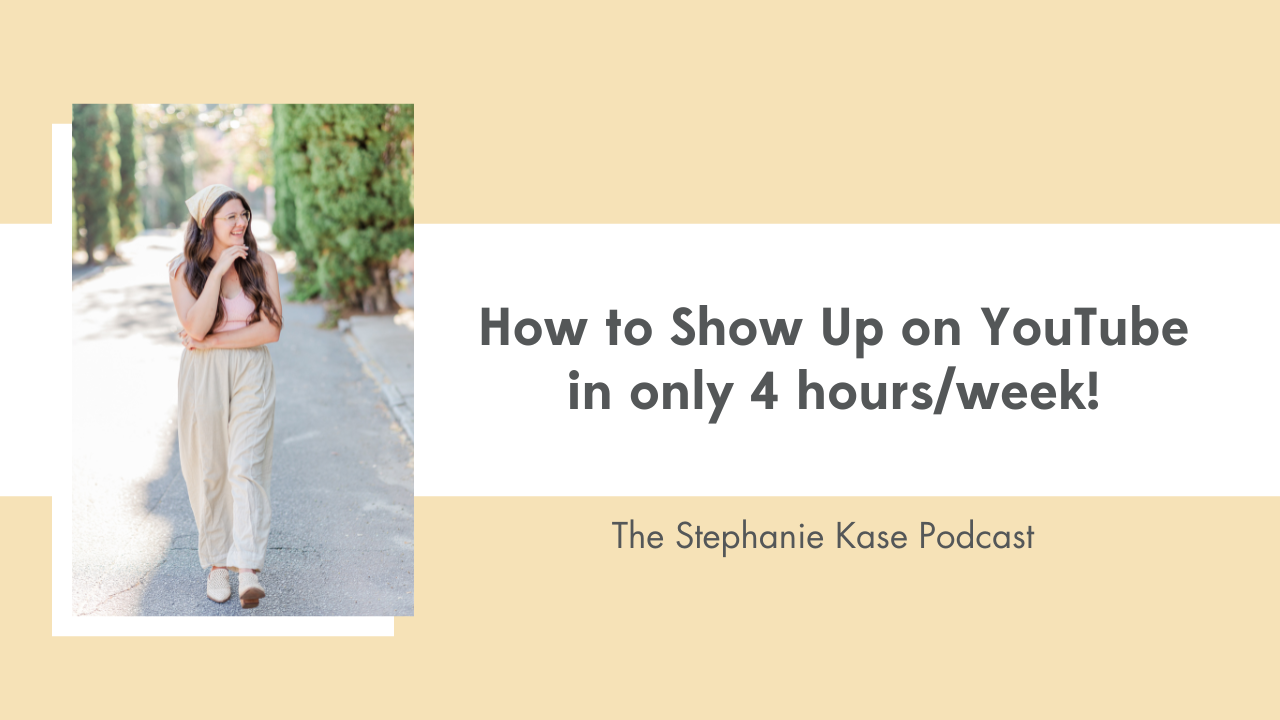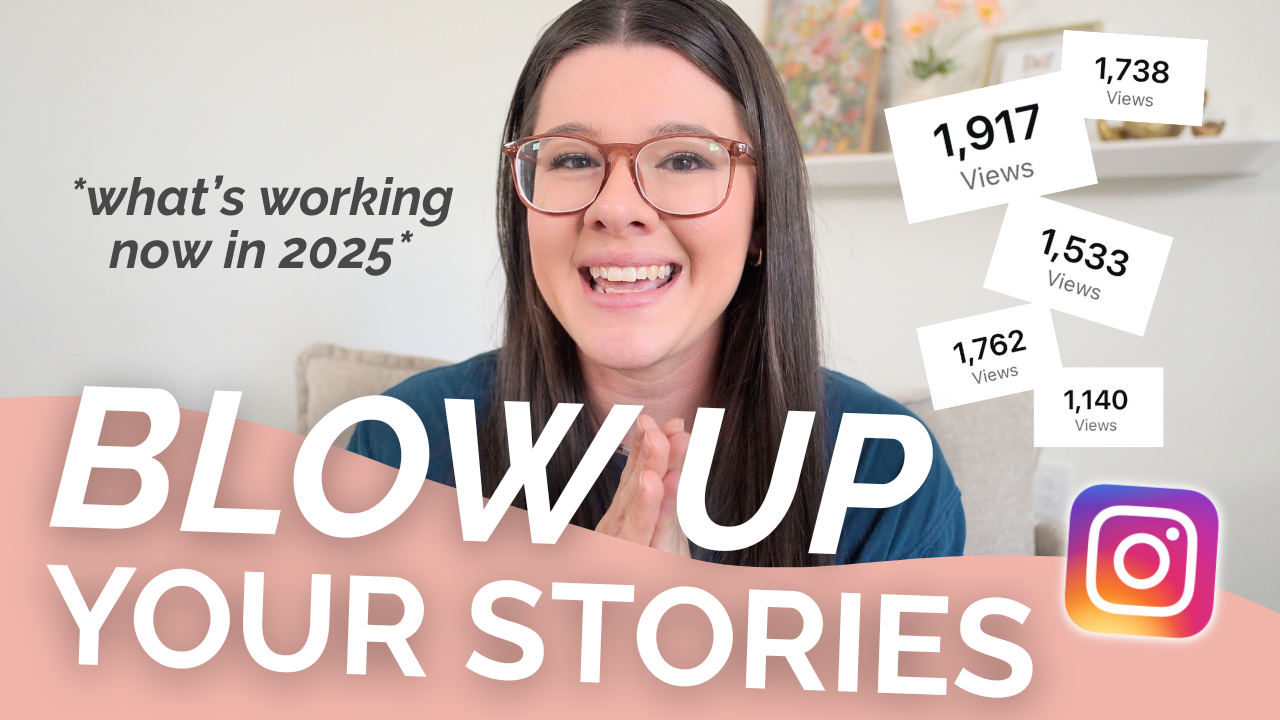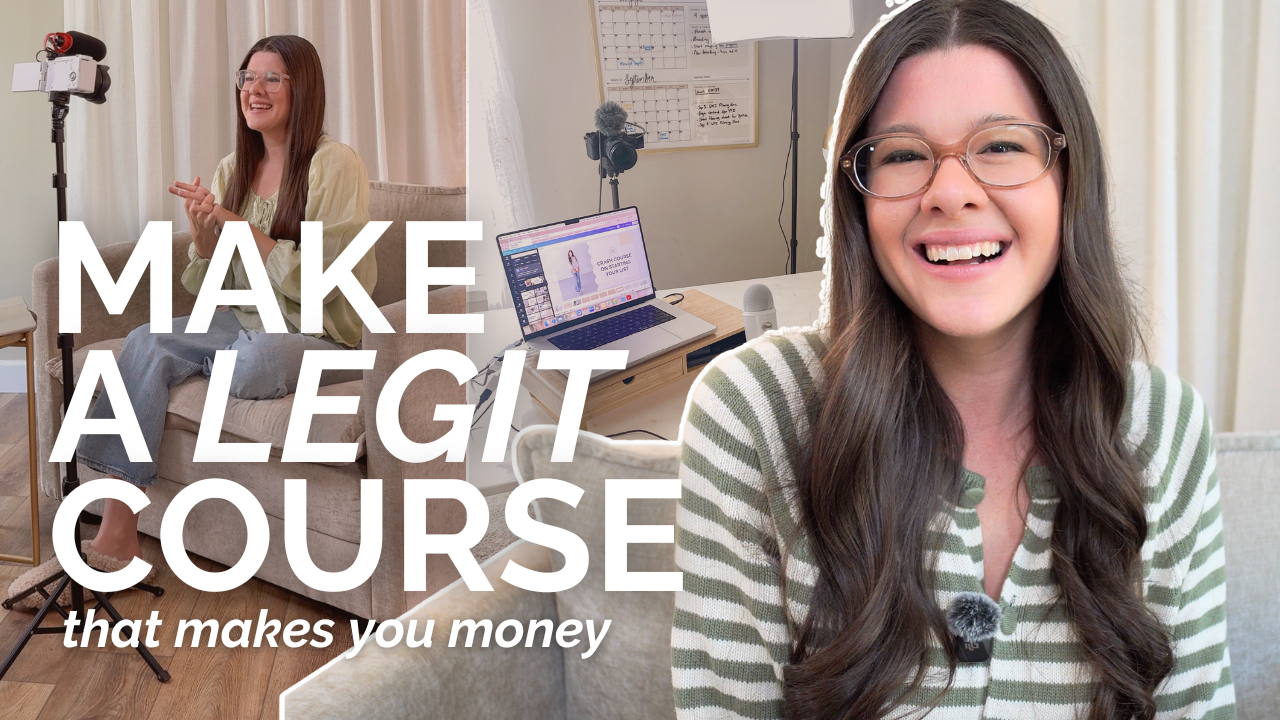When I first started my YouTube channel, I created a workflow that included ideating my videos, batch filming them one month at a time, editing, scheduling, and creating thumbnails. The best part is that I was STILL able to do it all in just four hours/week. Find out how to show up on YouTube in only 4 hours/week in this episode!
Listen to this episode on Apple Podcasts or Spotify!
Are you getting started with YouTube in 2024? Download my formula for making money with YouTube! This episode will focus on creating a workflow & illustrate how to show up on YouTube in just four hours each week, but my free download will help you pair money-making strategies with it so you can see more money in your business!
4 Hour Weekly Workflow
Every week, I use Toggl to track my time. I like to look back at how many hours I spent dedicated to specific tasks. In2018, I started my channel. For the first two years, I had no idea what I was doing. I had no strategy, and at the end of 2019, took a four-month break. After some time off, I restarted in 2020 and got more serious about my channel.
I looked back in Toggl at the time I spent on YouTube in 2020. At the time, I was filming my videos, editing by myself, and scheduling the content, too. I was spending about 18 hours per month (roughly 4 hours each week) on my channel. Now, with the help of my team, I only spend four to five hours condensed into one day working on my channel.
I want to share my strategies for posting on YouTube and making it worth your time. It’s a myth that hosting a working YouTube channel is a part-time job. That’s not the case! Here’s how I consistently posted one YouTube video each week using only four hours of my time weekly.
Batch Filming
The best thing you can do is batch film, or film multiple videos in one sitting. This requires that you prepare your outlines ahead of time. My goal, when starting, was to film four videos in one sitting. It took some time to build up to that. In the beginning, filming can feel very exhausting. Begin by filming at least two videos in one sitting.
Setting up your camera, lighting, and getting yourself ready takes time. Filming multiple videos at once will save you so much of that time.
Once you’re finished, put your next filming date on your calendar. Reserve that time for filming multiple videos. Stay ahead of schedule (2-4 weeks), but don’t film too far in advance (8+ weeks). Filming too far in advance might cause you to miss out on growth opportunities, such as when videos start to gain traction or trends in your niche are happening.
As I film, I back up my video footage between videos. I give myself a five-minute break to upload my videos to my hard drive and Google Drive. I also double-check that everything filmed, the audio works, etc.
For your workflow, that should add up to about an hour per video. Because I’ve developed a rhythm, I can do things a little quicker, but an hour per video is a good place to start.
Editing
What worked for me was to film four videos in one sitting. Then, I would edit one of those videos each week. Batch editing did not work for me. Once per week, I would sit down with fresh eyes and edit one video in roughly two hours. I recommend starting with the goal of editing one video at a time.
Your videos do not need to be fancy to be effective. Even now, at SK, we keep our transitions and pop-ups simple to keep our time spent on editing low.
Recommended Programs
I recommend starting with iMovie for Apple users. It’s free, intuitive, and can do almost anything you need to do for YouTube (overlays, outros, etc.).
Now, mostly because of my needs for online course creation, I’ve updated to the paid version of iMovie called Final Cut Pro (one-time fee of $299).
Other programs include Adobe Premiere Pro and Descript. Both are subscription-based. We use Descript mostly for short-form content. Adobe Premiere Pro did not feel intuitive to me, but it may work for you!
By the way, I’m launching a full YouTube course on January 15th, 2024! It’s an online course about how to market your business on YouTube. Inside the course, you’ll find exact tutorials on how to use these programs, add overlays, screen record for your videos, and anything else you might be wondering about creating YouTube videos.
Editing should take about two hours per week, which will be the biggest part of your workflow.
Other YouTube Tasks
This brings us to the fourth hour of your weekly workflow. The next thing we will focus on is your thumbnails. I like to create thumbnails, so that’s a part of our workflow that I still personally manage. When I finish a filming session, I spend an extra hour creating a thumbnail for each video. I can usually finish four to six thumbnails in that time. That averages out to about ten minutes per video.
For uploading and scheduling your videos, you can expect this to take about fifteen minutes per video. Most of that will be part of your description template. We’ll talk more about that in the YouTube for Business course.
The next piece of your workflow is ideating and creating outlines for video ideas. Typically, this takes about an hour. I research titles, ideas, check my analytics, remind myself of DMs I’ve gotten, and write my outlines.
Between creating thumbnails, uploading and scheduling, and ideating and outlining, you should expect to spend about an hour each week on these different pieces.
When I first started, I spent four hours each week on all of these tasks. As I became consistent and my channel grew, I was able to hand parts of this workflow off to my team members. Here’s what that might look like in your business.
Outsourcing YouTube Tasks
First, you might hire a video editor. I would warn you, they are fairly expensive. Also, make sure it’s someone familiar with how to edit for YouTube and knows what works on the platform.
Alternatively, you could teach an assistant how to edit your videos. There’s a benefit to first learning it by yourself, so that you can instruct someone later. If you’re a student of my YouTube for Business course, you could have a team member take the course, learn to edit videos from my course tutorials, and take that part of your workflow over!
Also, you might consider hiring a virtual assistant. This person could upload and schedule your videos. Or, you could hire someone to create your thumbnails. Again, make sure that they are familiar with what works on YouTube. You want effective over aesthetic.
You could pass off ideating your videos and creating your outlines. This person could research based on your channel what topic would be effective. Another idea is that you could outsource this to Ai with something like ChatGPT. Remember to examine it thoroughly and give it a real human touch.
Hopefully, this gives you some things to consider about your channel!
As a reminder, YouTube for Business comes out on January 15, 2024. It’s all about how to market your business on YouTube. If you haven’t already, download my YouTube formula! You’ll get on my email list and be the first to know about the course launch.
See you next Thursday at 8 AM!



